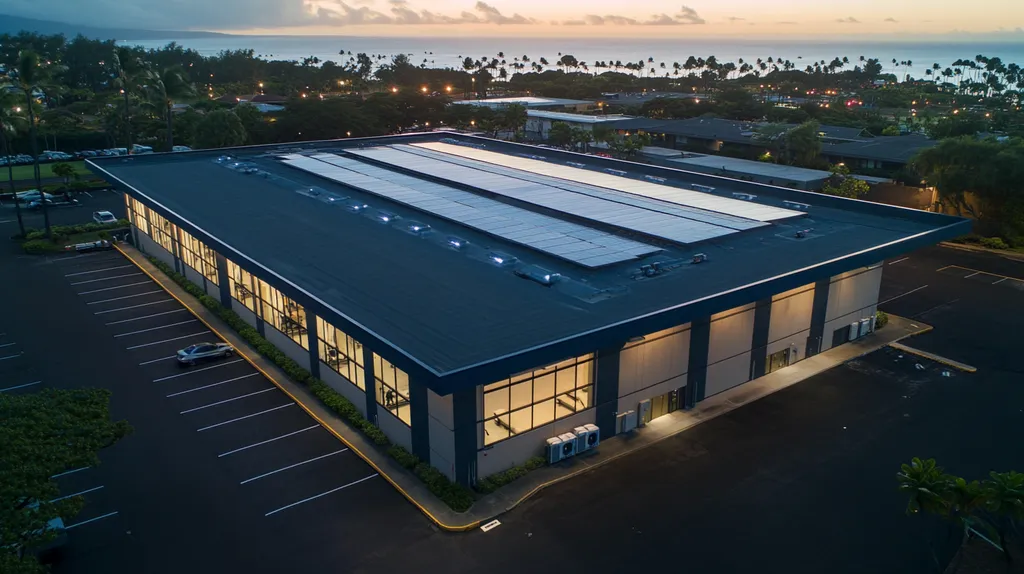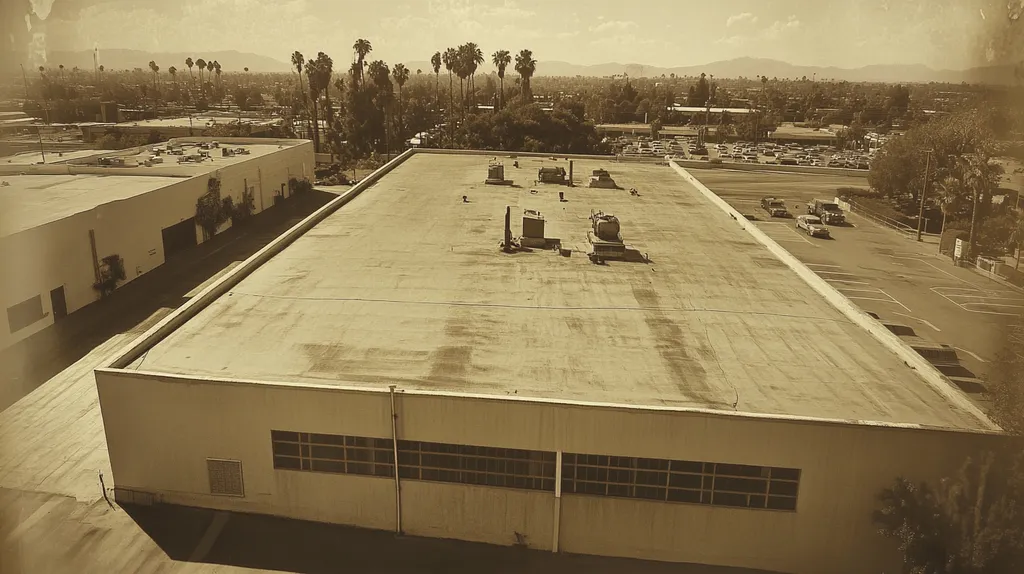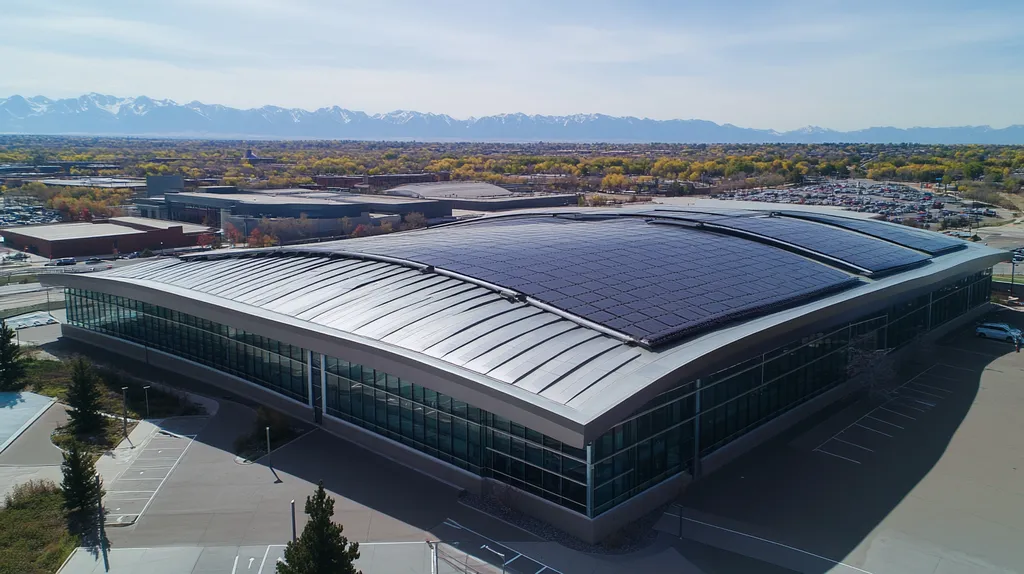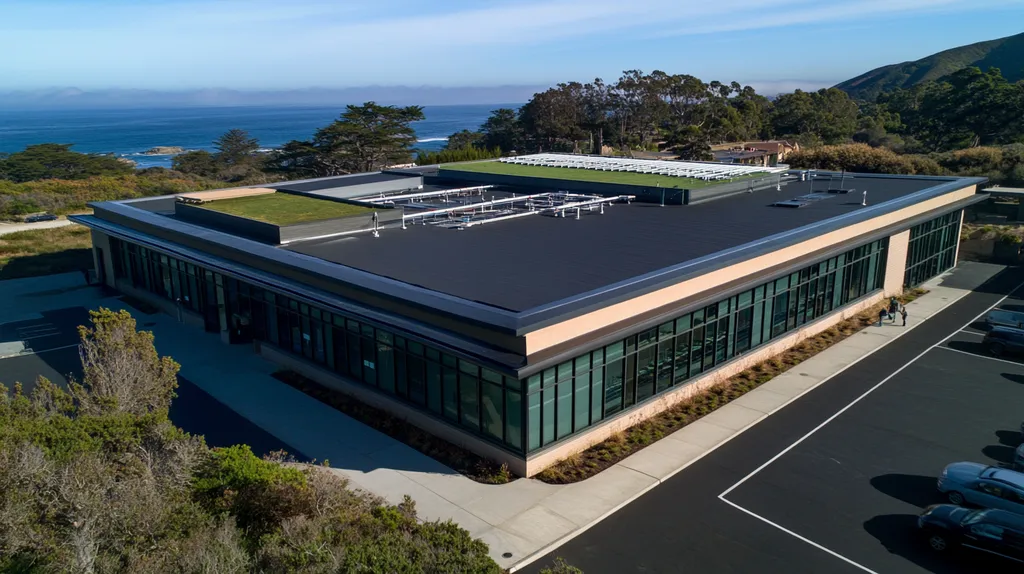Welcome to today’s Battle Royale featuring two roofing heavyweights: “Reflective Coatings” in the east corner versus “Elastomeric Coatings” in the west!
Tonight’s showdown pits these contenders against each other across six punishing rounds designed to test every aspect of their performance for Commercial Roof Ventilation Needs.
At stake? Millions in potential costs, decades of building protection, and the critical performance demands of modern commercial and industrial facilities.
Our professional judging panel will evaluate each round on technical merit, real-world performance, and value delivery. After all six rounds, we’ll declare our ultimate champion.
Ladies and gentlemen, facility managers and building owners… it’s time to rumble!
ROUND 1: INITIAL COSTS & INSTALLATION
When selecting a commercial roof coating, the financial implications extend far beyond the initial price tag. Recent market analysis shows coating decisions can impact total project costs by up to 40%, making this a critical consideration for facility managers and property owners. Understanding the complete cost picture requires examining three key factors that shape both immediate expenses and long-term value.
Material Expenses
Modern reflective coatings utilize advanced materials designed to maximize solar reflection and heat dispersion. These specialized components typically result in material costs ranging from $2.00 to $4.50 per square foot, depending on the specific formulation and quantity ordered.
Elastomeric coatings generally present lower initial material costs, typically falling between $1.25 and $3.00 per square foot. However, these coatings often require thicker application and multiple layers to achieve optimal performance.
A meticulously designed coating system plays a crucial role in maintaining proper airflow and eliminating indoor air contaminants, factors that directly influence long-term performance and value. (source: Home Evolution)
Given the lower upfront costs, elastomeric coatings earn the “ADVANTAGE” in material expenses, despite potential long-term considerations.
Installation Complexity
Reflective coating installation typically follows a straightforward process, requiring minimal surface preparation and fewer application steps. Most applications can be completed in a single pass, reducing labor hours and minimizing the potential for application errors.
Elastomeric coatings demand more intensive preparation and precise application techniques. The multi-layer application process requires careful attention to thickness measurements and proper curing times between coats.
The simpler application process of reflective coatings translates to reduced labor costs and fewer potential installation complications. For these reasons, reflective coatings gain the “ADVANTAGE” in installation complexity.
Project Timeline
The streamlined nature of reflective coating installation typically results in project completion within 2-3 days for average-sized commercial roofs. This efficiency minimizes disruption to building operations and reduces exposure to weather-related installation risks.
Elastomeric coating projects often require 4-7 days for proper completion, accounting for multiple coating layers and necessary curing time between applications. This extended timeline increases vulnerability to weather delays and prolongs facility disruption.
With significantly shorter installation periods and reduced weather sensitivity, reflective coatings clearly earn the “ADVANTAGE” in project timeline considerations.
ROUND 1 WINNER: REFLECTIVE COATINGS
ROUND 2: DURABILITY & LIFESPAN
Durability and lifespan considerations dominate commercial roofing decisions, with premature failures costing property owners millions annually in repairs and replacements. Recent industry data shows that improper coating selection can reduce a roof’s functional lifespan by up to 40%. Understanding how reflective and elastomeric coatings impact long-term performance is crucial for making informed investments that maximize return on investment.
Weather Resistance
Reflective coatings excel in UV protection, creating a robust barrier that prevents ultraviolet degradation of the underlying roofing materials. Their highly engineered formulations maintain reflectivity even after years of sun exposure, helping preserve the roof’s structural integrity.
While effective against UV rays, reflective coatings can show reduced performance in areas with frequent precipitation or temperature fluctuations. Their primary focus on heat reflection means they may offer less protection against other environmental stressors.
Elastomeric coatings provide superior protection against a broader range of weather conditions. Their flexible nature allows them to expand and contract with temperature changes while maintaining a watertight seal.
Given their comprehensive weather protection capabilities and adaptability to various climate conditions, elastomeric coatings earn the “ADVANTAGE” in weather resistance.
Physical Durability
Reflective coatings typically maintain their protective properties for 7-10 years before requiring reapplication. Their durability directly correlates with their ability to maintain reflective properties, which gradually diminish over time.
These coatings show moderate resistance to physical impacts but can be vulnerable to scratching and scuffing during routine maintenance. Additionally, their effectiveness can be compromised by surface contamination and dirt accumulation.
Elastomeric coatings demonstrate exceptional physical durability, with typical lifespans reaching 15-20 years. Their elastic properties allow them to withstand physical stress without cracking or separating from the substrate.
The superior longevity and physical resilience of elastomeric coatings earn them the clear “ADVANTAGE” in physical durability.
Maintenance Requirements
Reflective coatings need regular cleaning to maintain their reflective properties and protective capabilities. Annual inspections and periodic recoating of high-wear areas are essential for optimal performance.
These maintenance requirements can impact overall operational costs, though they help ensure the coating continues to provide effective protection. The frequency of maintenance directly affects the coating’s ability to maintain proper ventilation and energy efficiency.
Elastomeric coatings generally require less frequent maintenance, with inspections typically needed only every 18-24 months. Their durable nature and self-cleaning properties help reduce the need for regular interventions.
Due to their lower maintenance demands and longer intervals between service requirements, elastomeric coatings secure the “ADVANTAGE” in maintenance requirements.
ROUND 2 WINNER: Elastomeric Coatings
ROUND 3: PERFORMANCE FACTORS
Performance factors in commercial roof coatings directly impact building efficiency and operational costs. Recent data shows improper coating choices can increase energy consumption by up to 30% and accelerate material degradation. Understanding how these coatings affect ventilation, temperature control, and long-term durability is essential for making informed decisions that protect both the building and bottom line.
Impact on Heat Build-Up
Reflective commercial roof coatings create a seamless, highly reflective surface that reduces heat absorption and prevents excessive indoor temperatures. These specialized coatings can reduce roof surface temperatures by up to 50°F, significantly decreasing air conditioning demands during peak periods. (source: Advanced Roofing)
Elastomeric coatings provide insulation through their thick, flexible membrane structure. However, this same characteristic can trap heat beneath the surface, potentially increasing indoor temperatures and straining HVAC systems.
Given their superior heat reduction capabilities and proven impact on energy efficiency, reflective coatings earn the clear “ADVANTAGE” in heat management.
Condensation Control
Proper condensation control directly influences both roof longevity and indoor air quality. Reflective coatings minimize temperature differentials between the roof surface and indoor environment, reducing the likelihood of condensation formation.
Elastomeric coatings can create vapor barriers that trap moisture between the coating and roof substrate. This trapped moisture often leads to premature degradation of roofing materials and can compromise indoor air quality.
With superior moisture management capabilities and better vapor control, reflective coatings secure the “ADVANTAGE” in condensation control.
Ventilation Efficiency
Effective roof ventilation depends heavily on temperature regulation and air movement. Reflective coatings help maintain consistent roof temperatures, promoting natural convection and reducing the strain on mechanical ventilation systems.
While elastomeric coatings provide excellent waterproofing, their thickness can interfere with proper airflow patterns. This interference often necessitates additional mechanical ventilation to maintain adequate air exchange.
The superior temperature regulation and enhanced natural ventilation properties of reflective coatings earn them the “ADVANTAGE” in ventilation efficiency.
ROUND 3 WINNER: Reflective Coatings
ROUND 4: MAINTENANCE REQUIREMENTS
Maintenance requirements represent a critical factor in commercial roofing decisions, with improper upkeep leading to premature system failure and escalating repair costs. Industry data reveals that inadequate maintenance can reduce a roof coating’s lifespan by up to 60% while increasing energy costs by 25-30%. Understanding these maintenance demands is essential for protecting both the building envelope and operational budgets.
Cleaning and Surface Care
Reflective coatings maintain their performance through relatively straightforward cleaning protocols. Regular washing with standard commercial cleaners effectively removes surface contaminants that could compromise reflectivity.
Professional cleaning is typically required only once annually, with simple interim rinses sufficient for maintaining optimal performance. Energy-efficient roofing systems like reflective coatings reduce reliance on extensive heating and cooling, which helps maintain better indoor air quality. (source: Home Evolution)
Elastomeric coatings demand more intensive cleaning procedures to prevent material degradation. Their textured surface tends to trap debris and pollutants, requiring specialized cleaning solutions and techniques.
Given their simpler maintenance requirements and resistance to contamination, reflective coatings earn the “ADVANTAGE” in cleaning and surface care.
Inspection Requirements
Reflective coating systems typically require semi-annual visual inspections to identify potential issues. These inspections focus primarily on surface integrity and maintaining consistent reflectivity across the roof area.
Basic measurement tools can verify coating performance, allowing facility staff to conduct routine assessments without specialized equipment. Early detection of problems through regular inspection helps prevent more serious issues from developing.
Elastomeric coatings need quarterly inspections to monitor for stretching, separation, or adhesion failures. These examinations must be more thorough due to the coating’s complex physical properties.
With less frequent inspection requirements and simpler assessment protocols, reflective coatings secure the “ADVANTAGE” in inspection requirements.
Repair Procedures
Reflective coating repairs typically involve simple spot applications to damaged areas. The repair material readily bonds with existing coating, creating seamless integration without extensive surface preparation.
Most repairs can be completed within a single day, minimizing facility disruption and reducing labor costs. The straightforward nature of these repairs allows for quick response to identified issues.
Elastomeric coating repairs demand more complex procedures, including proper thickness matching and cure time consideration. Multiple coating layers may be necessary to achieve proper integration with existing material.
The simplified repair process and faster completion time give reflective coatings the clear “ADVANTAGE” in repair procedures.
ROUND 4 WINNER: Reflective Coatings
ROUND 5: SUSTAINABILITY CREDENTIALS
Sustainability credentials have become a critical factor in commercial roofing decisions, with environmental regulations and energy costs driving facility choices. Recent industry data shows poor coating selections can increase energy consumption by up to 35% while contributing significantly to landfill waste. Understanding the environmental impact of coating choices helps property managers balance operational efficiency with ecological responsibility.
Energy Efficiency and Reflectivity
Reflective coatings create a seamless, highly reflective surface that reduces heat absorption and prevents excessive indoor temperatures. These specialized coatings can reduce roof surface temperatures by up to 50°F, significantly decreasing air conditioning demands during peak periods. (source: Advanced Roofing)
The high solar reflectance index (SRI) of these coatings maintains consistent performance throughout their lifespan, providing predictable energy savings and reduced cooling costs. Their effectiveness in managing heat load directly impacts ventilation requirements and HVAC efficiency.
Elastomeric coatings offer moderate thermal resistance through their insulating properties but lack the active heat reflection capabilities of reflective options. Their thicker application can actually trap heat, potentially increasing cooling demands during peak periods.
Given their superior temperature control and proven energy reduction capabilities, reflective coatings earn the “ADVANTAGE” in energy efficiency.
Material Composition and VOC Impact
Modern reflective coatings utilize low-VOC formulations that meet or exceed environmental standards. These advanced materials minimize atmospheric pollutants while maintaining high performance characteristics.
The manufacturing process for reflective coatings typically requires less energy and produces fewer waste products than traditional coating options. Their application creates minimal environmental impact and supports green building initiatives.
Elastomeric coatings often contain higher levels of volatile organic compounds and require more material per square foot of coverage. Their production process generates more waste and environmental pollutants compared to reflective alternatives.
With superior environmental characteristics and reduced ecological impact, reflective coatings secure the “ADVANTAGE” in material composition.
Lifecycle Sustainability
Reflective coating systems typically maintain their environmental benefits throughout their service life. Their durability and resistance to degradation reduce replacement frequency and associated material waste.
These coatings can often be renewed rather than completely replaced, minimizing disposal impact. Their maintenance requirements typically involve environmentally friendly cleaning procedures that avoid harsh chemicals.
Elastomeric coatings generally require more frequent replacement and generate more waste during maintenance and repair. Their thicker application means more material ends up in landfills during replacement cycles.
The extended service life and reduced waste generation of reflective coatings earn them the “ADVANTAGE” in lifecycle sustainability.
ROUND 5 WINNER: Reflective Coatings
ROUND 6: SPECIALIZED APPLICATIONS
Specialized commercial roofing applications demand precise coating selections that can significantly impact building performance and operating costs. Industry data shows that mismatched coating applications can increase energy consumption by up to 45% while compromising ventilation effectiveness. Understanding how different coatings perform in specialized scenarios helps prevent costly system failures and operational inefficiencies.
High-Temperature Environments
In high-temperature environments, coating performance directly impacts building efficiency and system longevity. Heat stress can accelerate material degradation and compromise ventilation effectiveness if not properly managed.
Reflective coatings create a highly efficient thermal barrier that reduces heat absorption by up to 50°F, maintaining consistent surface temperatures even during peak exposure periods. This temperature control helps preserve proper ventilation flow patterns and reduces strain on mechanical systems.
Elastomeric coatings provide good insulation but can trap heat within the roofing assembly. Their thickness often impedes natural heat dissipation, potentially creating hot spots that disrupt ventilation patterns.
The superior heat management capabilities and ventilation preservation of reflective coatings earn them the clear “ADVANTAGE” in high-temperature applications.
Moisture-Prone Areas
Areas with high humidity or frequent precipitation require coatings that effectively manage moisture while maintaining proper ventilation. Poor moisture control can lead to system deterioration and compromised indoor air quality.
Reflective coatings promote efficient moisture evaporation through temperature regulation and surface properties. Their smooth finish helps prevent water pooling while allowing proper vapor transmission.
Elastomeric coatings excel at waterproofing but can create vapor barriers that trap moisture within the roofing assembly. This characteristic often requires additional ventilation modifications to prevent condensation issues.
Given their balanced approach to moisture management and ventilation preservation, reflective coatings secure the “ADVANTAGE” in moisture-prone applications.
High-Traffic Areas
Roofing sections subject to regular maintenance traffic require coatings that maintain their protective properties while preserving ventilation effectiveness. Surface degradation from foot traffic can compromise both coating performance and airflow patterns.
Reflective coatings demonstrate good wear resistance while maintaining their thermal properties. Their durable surface composition helps prevent damage that could impact ventilation effectiveness.
Elastomeric coatings can show premature wear in high-traffic areas, potentially leading to thickness variations that affect ventilation flow. Their susceptibility to physical damage often requires more frequent repairs and surface restoration.
The superior durability and consistent performance of reflective coatings earn them the “ADVANTAGE” in high-traffic applications.
ROUND 6 WINNER: REFLECTIVE COATINGS
AND THE WINNER IS…
After six grueling rounds of technical evaluation, we have our verdict. In a dominant performance, winning five out of six rounds, our new Commercial Roof Coating Champion is… REFLECTIVE COATINGS!
This powerhouse contender demonstrated superior performance in installation efficiency, heat management, maintenance simplicity, sustainability credentials, and specialized applications. Its ability to reduce surface temperatures by up to 50°F while maintaining optimal ventilation proved unstoppable in the commercial arena.
But don’t count elastomeric coatings out completely! When it comes to pure durability and weather resistance, this veteran fighter still packs a mighty punch, especially in regions with extreme temperature fluctuations and heavy precipitation.
Remember, folks – every building brings its own unique challenges to the ring. Local climate conditions, structural specifications, and operational requirements can all impact coating performance. While this analysis provides valuable insights, it’s crucial to consult with qualified roofing professionals who can evaluate your specific situation.
In the high-stakes world of commercial roofing, there’s no such thing as a one-size-fits-all champion. The real victory comes from matching your facility’s specific needs with the right contender’s strengths. Choose wisely – your building’s future performance hangs in the balance!
FREQUENTLY ASKED QUESTIONS
Q. How do initial costs differ for commercial roof coatings?
A. Reflective coatings generally have higher material costs but simpler installations. Elastomeric coatings have lower initial material costs but require more layers, leading to complex installations and potential long-term costs. Understanding these factors is crucial for budgeting appropriately.
Q. Which coating lasts longer for industrial roofs?
A. Elastomeric coatings typically last 15-20 years compared to 7-10 years for reflective coatings. Their durability allows for better performance under various climate conditions, making them a reliable choice for long-term needs.
Q. How do commercial roof coatings impact ventilation efficiency?
A. Reflective coatings enhance ventilation by maintaining consistent roof temperatures and promoting natural convection. Elastomeric coatings can impede airflow due to their thickness, which often necessitates additional mechanical ventilation solutions to ensure adequate air exchange.
Q. Are maintenance requirements different for elastomeric and reflective coatings?
A. Reflective coatings have simpler maintenance needs, requiring only annual professional cleaning. Elastomeric coatings demand more extensive care and inspections, often increasing operational costs due to their higher maintenance frequency.
Q. Which roof coating is better for sustainability?
A. Reflective coatings often use low-VOC materials and maintain energy efficiency, minimizing environmental impact. In contrast, elastomeric coatings tend to have higher VOC levels and can contribute to more waste, making reflective options the superior choice for sustainability.
Q. What are the specific advantages of reflective coatings?
A. Reflective coatings excel in heat management, condensation control, and ease of maintenance. They provide cost savings through improved energy efficiency and have longer-lasting performance in moderate climates, making them a strong option for commercial use.
Q. How do commercial roofs perform in specialized applications?
A. Reflective coatings are preferred in high-temperature environments due to their heat management capabilities. They also perform well in moisture-prone areas by facilitating evaporation, while elastomeric coatings can create issues in these specialized applications.











